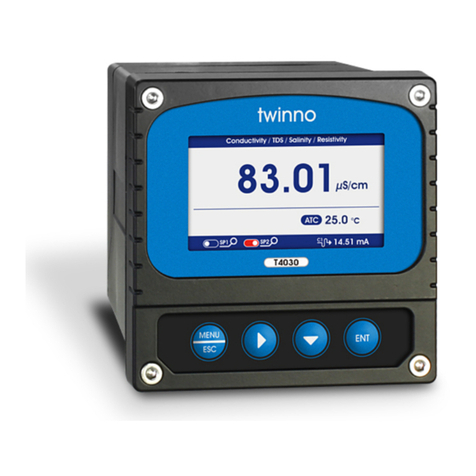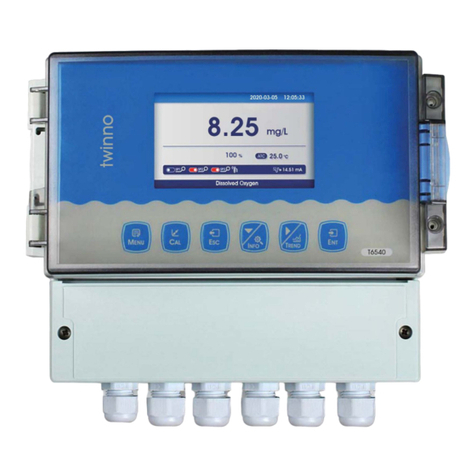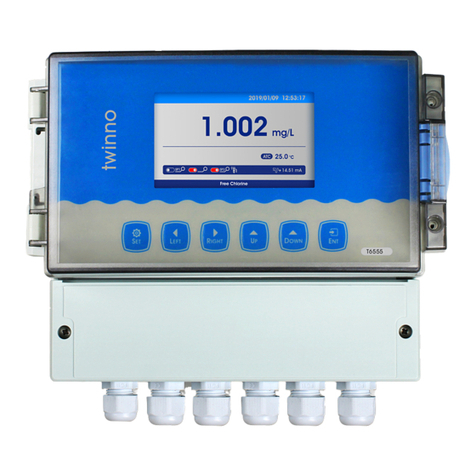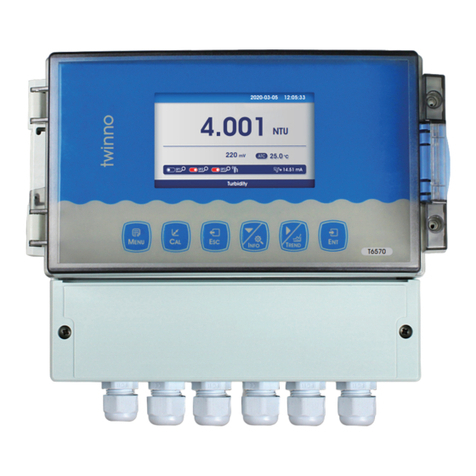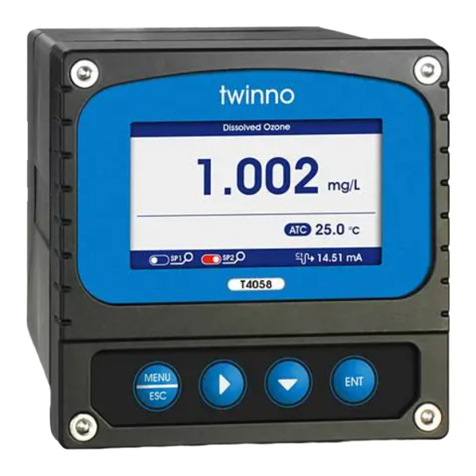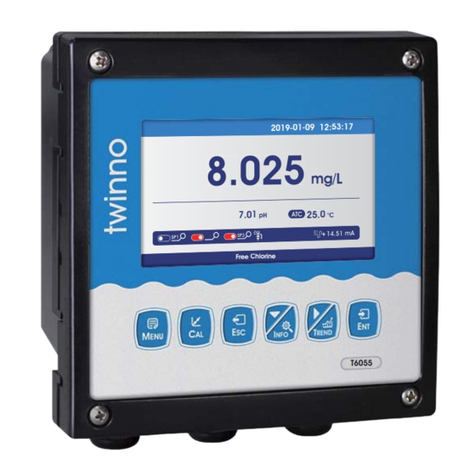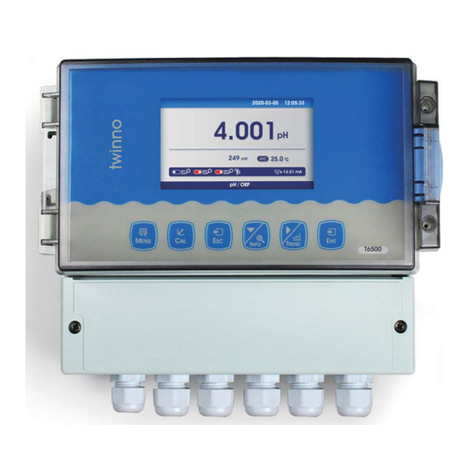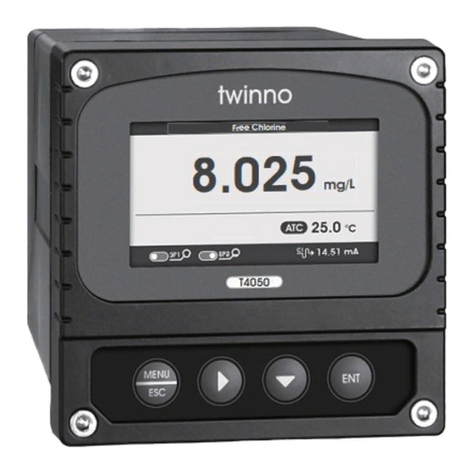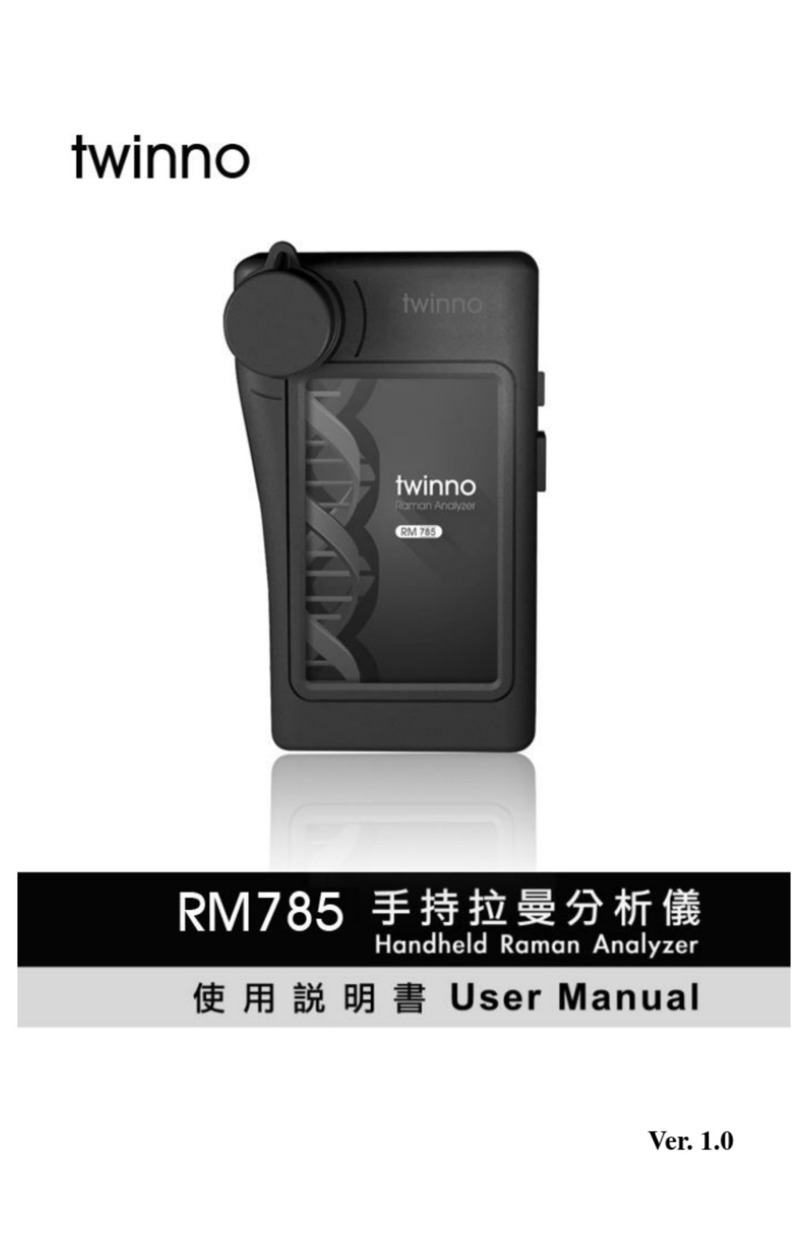
1
Features
The instrument is equipped with different types of pH or ORP sensors. Widely used in power
plants, petrochemical industry, metallurgical electronics, mining, paper industry,
biological fermentation engineering, medicine, food and beverage, environmental
protection water treatment, aquaculture, modern agricultural planting and other
industries. The pH (acidity and alkalinity) value, ORP (redox potential) value and
temperature value of water solution were continuously monitored and controlled.
ӪLarge color LCD display
ӪIntelligent menu operation
ӪData Recording /Curve display/Data upload function
ӪMultiple automatic calibration
ӪDouble high resistance measurement mode, stable and reliable
ӪManual and automatic temperature compensation
ӪThree relay control switches
ӪHigh & low alarm and hysteresis control
Ӫ4-20mA&RS485 Multiple output modes
ӪMulti parameter display simultaneously shows – pH, Temp, mV,etc.
ӪPassword protection to prevent misoperation by non-staff.
Preface
Thank you for your support. Please read this manual carefully before use.The correct use
will maximize the performance and advantages of the product, and bring you a good
experience.
When receiving the instrument, please open the package carefully, check whether the
instrument and accessories are damaged by transportation and whether the accessories
are complete. If any abnormalities are found, please contact our after-sales service
department or regional customer service center, and keep the package for return
processing.
This instrument is an analytical measurement and control instrument with highly
precision.Only skilled,trained or authorized person should carry out installation, setup and
operation of the instrument.Ensure that the power cable is physically separated from the
power supply when connection or repair.Once the safety problem occurs, make sure that
the power to the instrument is off and disconnected.
For example, it may insecurity when the following situations occur:
1) Apparent damage to the analyzer
2) The analyzer does not work properly or provides specified measurements.
3)The analyzer has been stored for a long time in an environment where the temperature
exceeds 70 ˫.
The analyzer must be installed by professionals in accordance with relevant local
specifications, and instructions are included in the operation manual.
Comply with the technical specifications and input requirements of the analyzer.
22
Complete Set
We Instruments warrants this product to be free from significant deviations in material and
workmanship for a period of one year from the date of purchase. If repair is necessary
and has not been the result of abuse or misuse within the warranty period, please return
to We Instruments and amendment will be made without any charge. We Instruments
Customer Service Center will determine if product problem is due to deviations or
customer abuse. Out of warranty products will be repaired on a charge basis.
Authorization must be obtained from We Instruments Customer Service Center to issue a
RIR number before returning items for any reason. When applying for authorization, please
nclude date requiring the reason of return. Instruments must be carefully packed to
prevent damage in shipment and insured against possible damage or loss. We
Instruments will not be responsible for any damage resulting from careless or insufficient
packing.
Warning: Damage as a result of inadequate packaging is the User / distributor’s
responsibility.
Please follow the guidelines below before transporting.
Use the original packaging materialif possible, when transporting back the unit for repair.
Otherwise wrap it with bubble pack and use a corrugated box for better protection.
Include a brief description of any faults suspected for the convenience of Customer
Service Center, if possible.If there are any questions, feel free to contact our Customer
Service Center or distributors.
Warranty
Product Description
1) T6000 Online pH/ORP Meter
2) pH/ORP Sensor with connection cable
3) pH Buffer(ORP Sensor has no buffer)
4) Embedded bracket, wall mounted bracket
5) Operating Manual
6) Qualification Certificate
7) Warranty card
Quantity
1
1
1
1
1
1
1
Note: Please check the complete set of instruments before use.
The company's other series of analytical instruments, please login to our website for enquiries.
